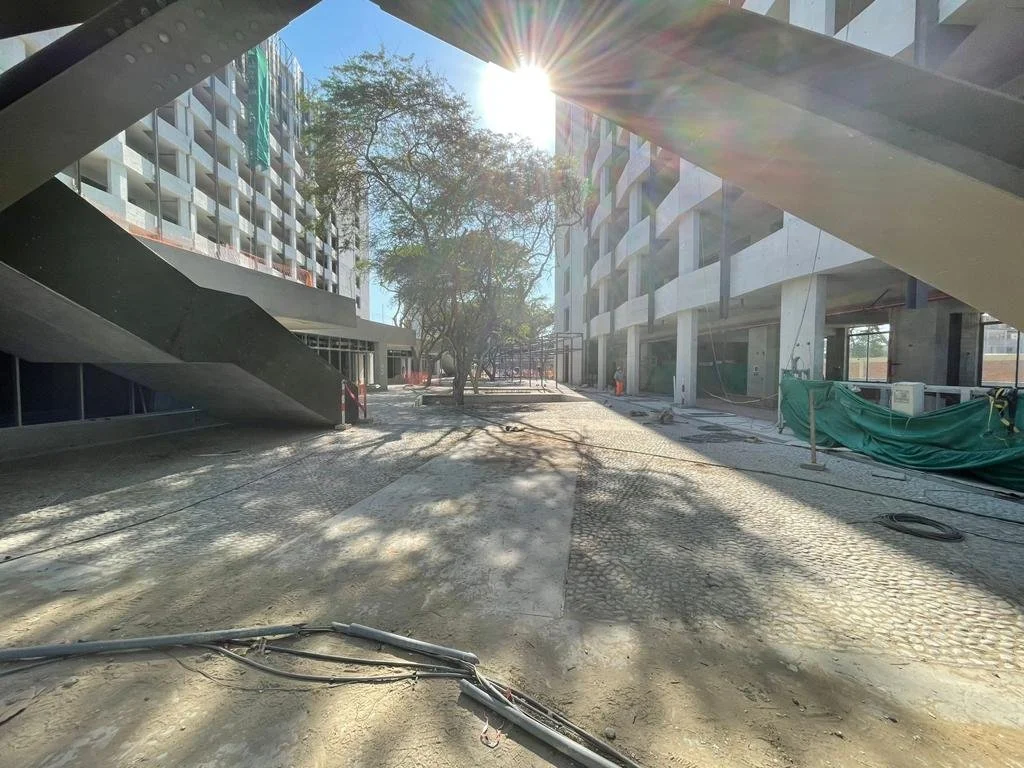Leading the Construction of a Medical School
By: Juan Carlos Garnica
Empowering Real Estate & Infrastructure Investments. Expert Strategies for Global Opportunities & Sustainable Growth
With great pride and happiness, I am pleased to announce the culmination of one of the most critical projects I have ever led. The company that I direct, PIRKA SAC, was in charge of designing and constructing the institutional headquarters of the most important university in the north of Peru, UPAO, for its medical school.
The project consisted of the development of around 300,000 square feet of infrastructure, classrooms, laboratories, theaters, recreation areas, and the headquarters of the institute of competencies and medical skills. We aimed to generate a sustainable, bioclimatic and scalable project to obtain a LEED certification.
I want to thank the whole PIRKA team and my business partners, who, throughout the years, have supported all the undertakings that my management took on and believed in the results we have accomplished up to now.
Social Impact
The project generated more than 1 million man-hours of work for the Piura population and will generate a more significant impact through its new facilities with a capacity for 3,000 students, which will increase the regional doctor/patient ratio in the mid-term; likewise, it will help the owner to satisfy the growing demand in medical studies, accentuated demand during and after the pandemic time in 1.5x. Piura is a city with a population growth rate higher than the country's average, ranking among the four cities that contribute the most to the Peruvian GDP; the commissioning of this medical school will foster these factors and promote the influx of talented young medical students who will undoubtedly join this expansion.
Story of the Project
Only three years ago, we participated in the bidding process where Pirka was selected; the challenges were constant, from the proposal development through the bidding process to the execution stage. To achieve that, we managed a rigorous collaborator selection process; in that sense, we were fortunate to have had:
Dechini, a project management company with vast experience and prestige, collaborated with us in the bidding stage, the selection of the architecture team, the selection of construction companies, and the time management of the design stage.
More great help came from Poggione + Biondi Architects; this group of architects has a recognized global trajectory and has received several awards, and is led by Architect Renne Poggione. Renne conceptualized the owner’s needs through friendly designs following ESG components such as climate, student coexistence, and socialization.
BGS Ingenieria, a construction company that, together with PIRKA, was in charge of the building stage, successfully following the established deadlines, costs, and quality.
Upao team, always in tune with the needs of the project and seeking the benefit of all its stakeholders, and many others who were with us from the beginning, to all of them, excellent work, and thank you very much.
We had to overcome more than a few challenges, such as the tightening of the Peruvian incumbent banks, which raised rates and requirements through their financial investment vehicles at the beginning of the project. However, the pandemic constituted the most significant challenge, which I will split up into three categories, staff management, budget management, and time management:
-Staff management, seeking the right balance between project's effective progress and the health of its workers through the generation of support teams, consistent oversight, assistance, and collaboration of those involved, keeping the man-hour incidence up 32% of the total budget.
- Budget management, seeking budget optimization through agreement renegotiations, technical specification optimization, and management of other key indicators; a 15% supplementary budget was also managed. The project FCF remained as planned in 89% of cases, including pandemic time.
- Time management, through the application of lean construction, as well as the management of agreements and extensions, in order to reflect reality and achieve the fulfillment of goals within the established deadlines by the client.
Lessons Learned
I want to share some lessons that this project taught me:
- Effective and Empathyc communication, the frequency and quality of communication between the involved stakeholders will determine the project outcome through the channels established by the managers.
- Stakeholder teamwork oriented, in all phases of the project at all levels,
- Cultural factors and regional customs, understanding them, managing them, and quantifying them in cost and time
- Project management system, UX oriented to make the collection and processing of data easier to anticipate problems or develop solutions to future imbalances.
- Last but not least, synchronicity between designers and builders allowed us to execute what was planned and manage extensions, additional budgets, payments, and permits, among others.
What’s Next? Future Plans
Finally, I want to share the next big challenge, the launching of Ausangate Realty Partners, a Real Estate impact investment manager based in the US with a focus on the Pacific Alliance and presence in Lima, Barcelona, and New York. Our aim is to develop investment projects in the Spanish-speaking world and generate a positive social impact. We will continue working with top-level professionals in the countries that host us, generating solid returns at a controlled risk for our investors.





